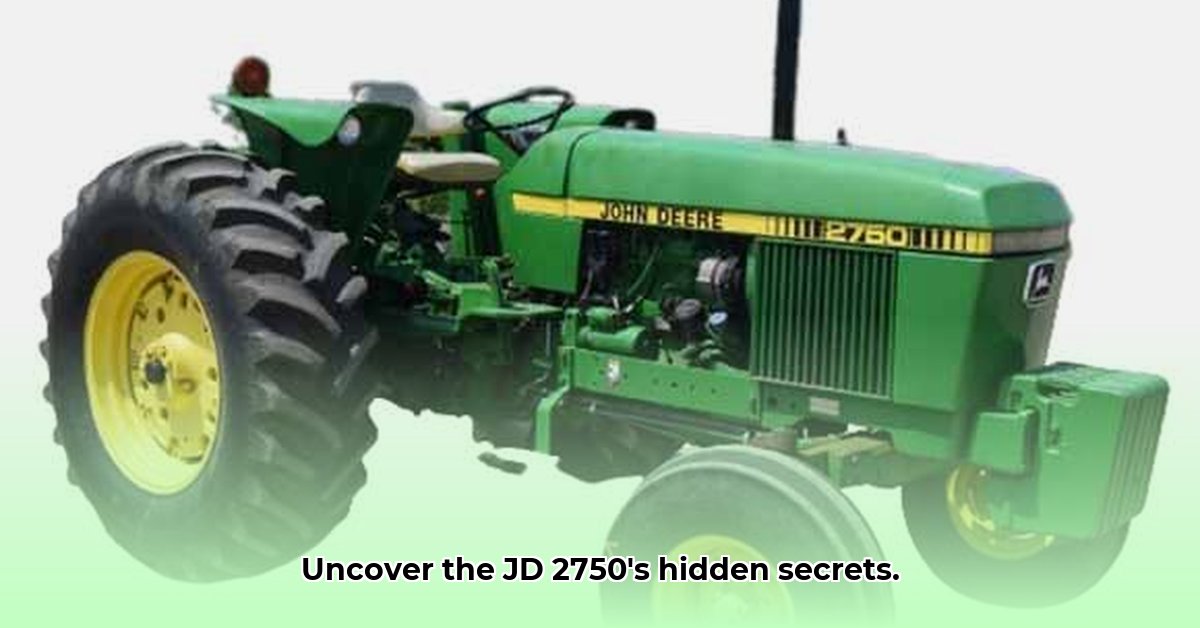
A Legacy of Dependability: The John Deere 2750 in Context
The John Deere 2750, produced from 1983 to 1986, occupies a significant place in the history of agricultural machinery. It wasn't a revolutionary design, but it represented the pinnacle of reliable, hardworking tractors during its era. Farmers valued its robust build, consistent performance, and adaptability to a wide range of tasks. Think of it as the dependable pickup truck of the tractor world—not flashy, but always ready to get the job done. This review examines the 2750's technical details, assesses its strengths and weaknesses based on available data and owner experiences, and provides actionable insights for prospective buyers and restoration enthusiasts. Did you know that the versatility of its transmission options—8, 12, or even 16 speeds—helped cement its position as a farmer's favorite? This wasn’t simply a machine; it was a partner in the daily grind. For more on smaller John Deere tractors, check out this helpful resource.
Under the Hood: Power and Precision
The 2750's heart was a John Deere 3.9-liter four-cylinder diesel engine, known for its durability and longevity. While not a powerhouse compared to modern tractors, its horsepower (varying slightly depending on configuration) proved more than adequate for most farm operations of the time. The engine was designed for reliability, not speed, reflecting the demands of a typical workday in the field. This focus on consistent power and dependability makes the 2750 a popular choice for anyone who values steadfast performance above all else.
The transmission options offered considerable flexibility. Farmers could choose from an 8-speed, a 12-speed, or a 16-speed partially powershift transmission. This allowed for precise control, whether planting delicate crops or tackling heavier tasks. The hydraulic system, while not as sophisticated as modern systems, provided sufficient lifting capacity for a range of implements. "It was the workhorse we needed," recalled farmer John Miller of Iowa, "and it never let us down."
Strengths, Weaknesses, and the Test of Time
The 2750's greatest strengths were its robust construction and versatility. Farmers consistently praised its reliability and ease of maintenance. The range of transmission options provided the adaptability needed for diverse farm work. However, its technology shows its age. Compared to modern tractors, fuel efficiency is lower, and sourcing parts can be challenging. Additionally, while effective, the partially synchronized transmissions aren't as smooth-shifting as modern counterparts. "Finding parts can be a quest," admits Sarah Jenkins, a classic tractor restoration expert. "But the satisfaction of getting it running again is second to none."
Current Market Value and Restoration Considerations
Determining the current market value of a used JD 2750 requires careful consideration of its condition, hours of operation, and included attachments. Condition is paramount, much like a classic car. A well-maintained 2750 will command a higher price. Restoring one is a significant undertaking, demanding mechanical skills, patience, and a reliable source of parts. Original parts are preferred, but reproducing parts may be necessary and can significantly increase the restoration cost. Before embarking on such a project, a careful assessment of your budget and resources should be taken.
Actionable Insights for Potential Owners
- Thorough Inspection: Before purchase, conduct a meticulous inspection of the tractor, focusing on engine condition, hydraulics, and transmission functionality.
- Parts Availability Research: Investigate the availability of parts; sourcing can become challenging, influencing repair costs.
- Mechanical Proficiency: Restoration requires significant mechanical knowledge. Professional assistance may be necessary for complex repairs.
- Budget Wisely: Restoration projects incur unexpected expenses. Establish a realistic budget beforehand.
- Assess Your Needs: Consider if the 2750 suits your current agricultural needs. Modern tractors offer increased efficiency and technology.
JD 2750: Key Specifications at a Glance
| Feature | Specification | Notes |
|---|---|---|
| Engine | John Deere 3.9L 4-cylinder diesel | Known for its robust design and longevity |
| Transmission | 8, 12, or 16-speed (various types) | Offered diverse choices to match farming styles and needs |
| Horsepower | Varied based on configuration | Generally sufficient for various field operations |
| Hydraulics | Ample lifting capacity for implements | Capable of handling a range of attachments |
| Weight | Approximately 7,500 to 8,910 pounds | Weight varied slightly due to configuration options |
| Available Options | ROPS, optional cab, front-end loader compatibility | Added safety and increased versatility |
The John Deere 2750, while not the most technologically advanced tractor, undeniably holds a special place in agricultural history. It was, and remains for many, a symbol of enduring reliability and dependable service. Its legacy lies not just in its technical specifications, but in the countless hours it spent working the land, a testament to a simpler, yet enduring, era of farming.